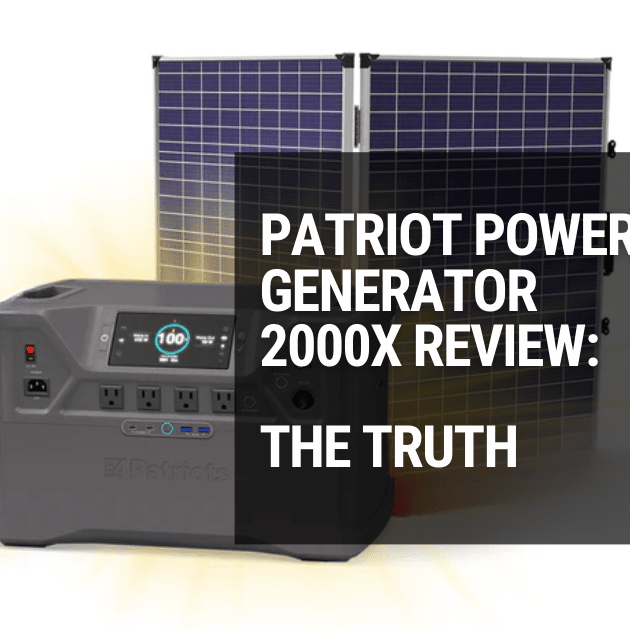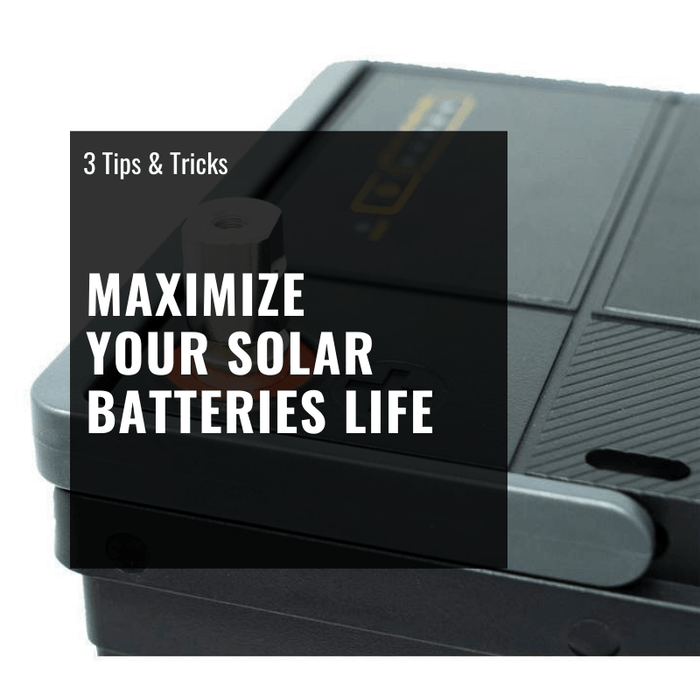
Top 5 Reasons why Mammoth RE are the Best Solar Batteries
Table of Contents
Why Mammoth RE Batteries are the Best for Solar
One of the biggest complaints about using solar energy to power your home is: what do you do when the sun isn’t shining? It’s a valid point, but also not really a valid argument against a home solar power system.
There are two ways to keep the home lights burning when the sunlight’s not there:
- Draw power from the grid: in a hybrid scenario the home has a solar power system and is also connected to the grid. When the panels are collecting sunlight all that energy is first used to power the home while any excess is fed back into the grid as credit on future energy use. When no power is being generated, the home simply draws its power back out from the grid.
- Store power in batteries: the option that more and more homeowners are choosing is having a battery bank that stores all the excess power you produce in your solar array. Your home uses that power when it’s too dark to generate solar. With a decent battery bank, you can be completely independent of the electricity grid and completely protected against any brownouts or blackouts the grid might be experiencing.
Nobody likes relying on an electricity grid that is anything but reliable.
Nobody likes feeling powerless when it comes to their power.
Battery technology has come a long way in the past few years and is only going to get better in the near future. Storage capacity and longevity have gone way up, and prices have come way down.
The next step in the evolution of batteries is the Mammoth RE line of solar batteries. They’re powerful, reliable, and affordable, and we believe that Mammoth RE are the best solar batteries on the market.
What are solar batteries?
A solar battery is a lot like any other battery: it stores electrical energy. Solar batteries are specially designed to work in a solar power system, and can be “stacked” in a battery bank to boost your overall storage capacity.
Like your car battery, a solar battery can also be recharged, but unlike your car battery it holds a lot of energy and it’s not going to die suddenly when you’re counting on it. This is important, because you’re trusting your solar battery to provide electricity to your home, so you need to be able to trust that there’s always going to be enough power when you need it.
Making sense of solar battery specifications
We all know the difference between AA, AAA, C, D, and other batteries used to power small devices, but when it comes to solar batteries there are a lot of specifications for these big boys that might not be familiar.
Type
There are several different types of solar battery, depending on what elements are used inside it.
- Lead acid: these have been around for a long time and are probably what’s under the hood of your car. The advantage of lead acid batteries is that they’re cheap, but they are also not very efficient, have relatively short lifespans, and they’re really heavy. Not the best choice for a solar system.
- Nickel-cadmium: rarely used in solar power systems, these batteries perform well, even in situations with big temperature fluctuations such as in airplanes. But they’re very expensive and cadmium is highly toxic, also not ideal for solar usage.
- Lithium ion: the gold standard of solar power storage, lithium batteries are smaller, lighter, more efficient, store more energy, and can release more energy before they have to be recharged. They are what’s inside cellphones, laptops, and in most cases solar power systems. A good lithium phosphate battery will last from 3000-8000 cycles (recharges) depending on use, meaning it will last easily last you for 10 years, and probably up to 20 or more years in the right setup.
Capacity
The amount of energy a battery can store is measured in kilowatt-hours (kWh), which is the use of 1,000 watts of energy over the course of one hour. The higher the kWh, the more power it can store.
The average American home uses about 30 kWh of electricity each day, but that doesn’t mean you need to have 30 kWh worth of battery capacity. You use most of your electricity in daytime when the panels are collecting sunlight and typically very little is used overnight, so to last through the dark hours you don’t need the full day’s quota of energy stored up.
That is, unless you want to be able to power through one or more days where less than optimal sunlight is shining on your panels so you’re generating less energy, which is why most systems have extra storage capacity literally for a rainy day.
Watt hours
This is just another way to express capacity. A 20 kWh battery holds 20,000 watt hours; a kilowatt is a thousand watts so multiply the number of kWh by 1,000 to get watt hours.
Voltage
Without getting too technical, a volt can be thought of as the measurement of electrical pressure. Using the same analogy, you can look at a battery as a pipe, so the voltage is how much pressure the pipe can handle flowing through it.
The typical little battery you put into a small flashlight is 1.5 volts. Some devices need more than one battery, and the voltage simply adds up: 2 batteries are 3 volts, 3 batteries are 4.5 volts, and so on. A car battery is about 12 volts. The battery in a solar system is usually 48 volts (equal to 4 car batteries), which still keeps it under the 50-volt threshold of low voltage, and therefore safe to handle without calling in a professional electrician.
Expandability
All solar batteries can be connected to more batteries to increase the overall size and capacity of a battery bank. There is a limit to how many can be connected together like this, but since this upper limit can be measured in the hundreds of kWh this maximum number of batteries is irrelevant to residential solar system owners.
Warranty
All battery manufacturers guarantee their batteries for a number of years. The industry standard for lithium solar batteries is 10 years, which is the minimum you should expect a solar battery to last. If there is a problem with a battery, it is very simple to fix: simply disconnect the battery and plug in a new one, no electrical experience required.
Price
This one needs little explanation. You will discover, however, that there can be a big difference between brands in the amount of storage you can get per dollar spent.
Higher-priced batteries are not necessarily better; in many cases you’re paying for a name, not a standard of quality. Similarly, lower-priced batteries are not necessarily inferior, they may just have lower overhead, distribution, or manufacturing costs, or could just be more aggressive in their marketing–all of which work in the customer’s favor.
What is the best solar battery?
With all the foundational information out of the way, we can now get to the meaty question: what is the best solar battery?
The challenger - Mammoth RE Batteries
The new kid on the block is the Mammoth RE line of solar batteries. They’re well-named too because these batteries are big. They were designed by experienced experts in the solar power business to meet the three big needs of the solar battery buyer:

- Simplicity - safe and easy for anybody to use
- Reliability - trust it to work problem-free, as needed, for a long time
- Price - not pay an arm and a leg for it
Using lithium phosphate and a smart design, Mammoth batteries meet all these needs with top-of-the-line performance in a sleek, simple form. Everything is encased in a single, attractive unit mounted on sturdy castor wheels.
They’re heavy–you can’t pack that much storage capacity into a single unit and not make it weigh a lot–but the smart design with wheels on the bottom makes it a breeze to move around, even with one hand.
There are two models currently in the lineup:
- Mammoth RE PLUS: boasting a respectable 9.6 kWh capacity, the Mammoth RE PLUS is a solid battery that can handle your emergency or overflow power, or be an excellent building block toward a complete off-grid system handling all you energy needs.
- Mammoth RE PRO: the PRO packs a whopping 23.5 kWh, more than enough to keep a large house powered up with surplus to spare. If you’re really serious about keeping the juice flowing no matter what, string 4 of these guys together to store 94 kWh and you’re ready for anything.
The contenders
We’re pitting the Mammoth RE PRO against three heavy hitters in the lithium ion solar battery game to see if it really is the best.
- eVault Max: The largest solar battery offered by Fortress Power, the eVault Max is similar in configuration to the Mammoth RE PRO. However, it weighs more even though it has only 79% of the capacity, lacks many of the safety and ease-of-use features, and costs 18% more.
- HomeGrid Stack'd: HomeGrid battery boxes are modular, able to contain up to 8 separate 4.8 kWh batteries linked together on a rack. The 19.2 kWh model comes with 4 such batteries. Unfortunately, that scalability means that there are a lot of potential points of failure. Every connection is a common point of failure and every battery has 2 connections, positive and negative, so every additional battery adds 2 more potential points of failure. That 19.2 kWh model has 10 such connections: 2 for each of the 4 batteries plus 2 more for the connection into an inverter or bus box. It also lacks other safety and ease-of-use features of the Mammoth RE PRO, weighs much more (without wheels for easy movement), has 82% of the capacity, and costs 25% more.
- Tesla Powerwall: The Tesla name carries a lot of weight thanks to its powerful electric car brand; people assume that Tesla knows batteries. However, there are some big disadvantages to going for the big name. You can’t buy Powerwalls direct from Tesla separately, you have to buy the whole solar package from Tesla and add in the Powerwall. Approved third-party solar companies can sell you the Powerwall, but you also have to pay them for installation which can add up to $4000 to the ticket price. Sure, they look darned good, as you would expect from Tesla, but inside the slick futuristic box is a system that doesn’t play well with others, lacks many of the Mammoth RE PRO’s features, has merely 55% of the capacity, and costs at least a whopping 31% more. At least it’s lighter, but you’d expect that in a battery with only slightly more than half the storage ability.

Looking at the specifications it’s clear that the Mammoth RE has a number of advantages over its top competitors but it comes down to more than just numbers. To truly see why Mammoth RE are the best you need to look at what all this means to you, the person counting on it to keep your power running.
The 5 reasons why Mammoth RE are the best solar batteries
1. Capacity
When it comes to storage in a solar power system, more is good. All batteries are scalable: you can always add more to increase your storage capacity, but every additional battery comes with a hefty cost and may increase the potential for problems by increasing the number of connections, a well-known point of failure.
The more storage you can get in one battery, the better. For this reason, the Mammoth RE PRO is the best, offering an enormous 23.5 kWh in one box.
2. Safety
All batteries need to connect into an inverter to convert the DC power they store into AC power your devices can use (unless they come with an inverter built-in) or a busbar. Every new connection increases the chance of a problem.
With the Mammoth RE batteries, it’s not a problem because it connects using the plug-and-play SB 175 connector. It’s as easy as plugging in a lamp and just as safe, with no potential points of failure on the battery. This is a huge advantage that the Mammoth RE has over other solar batteries.
As well, with normal batteries there’s the chance of an inrush of current creating sparks when you connect it. Mammoth RE solar batteries have a handy on/off switch, so you can power it down when making any connections and eliminate the chance of this happening.
3. Reliability
Getting rid of those potential points of failure and including an on/off switch not only make the Mammoth RE safer, but also more reliable. With fewer ways for problems to occur, you can have more faith that your Mammoth RE isn’t going to let you down.
4. Convenience
Do not underestimate the value of some solid castors when moving around a 465-pound block of battery. As well, that amazing SB 175 connector makes hooking the Mammoth PRO to an inverter, busbar, or even another Mammoth battery a breeze.
5. Price
Hands down, the Mammoth RE offers the best value for the price. You sacrifice nothing by going for the least expensive option; in fact, you get a lot more for a lot less.
Bonus reason
The Mammoth RE batteries are designed and built in America. The vast majority of solar gear, including batteries, comes from China or other places overseas. You can feel good about supporting domestic industry and rest easy knowing that quality workmanship has gone into every step of getting your Mammoth RE into and powering your home.
Mammoth RE Battery Summary
Now that you’re an expert on solar batteries, you can clearly see that the Mammoth RE’s simplicity, reliability, and affordability are second to none. Combined with its safety, convenience, and market-leading storage capacity, there can be no doubt that Mammoth RE solar batteries really are the best there are.
Check out the Mammoth RE batteries at shopsolarkits.com and ask for a quote to take your first step toward making your solar power dreams come true.
Get a Free Custom Quote!
If you've journeyed with us this far on our solar blog, you've undoubtedly come to appreciate the benefits of solar power, but have you considered how solar energy could benefit you in your own home or business?
Get a FREE, personalized solar system quote specifically designed for you!
Discover the substantial savings on your energy bills and increase in your property's value. It's more than just solar power, it's a smarter, more sustainable way of living.
Click below to illuminate your path to solar energy!




Leave a comment